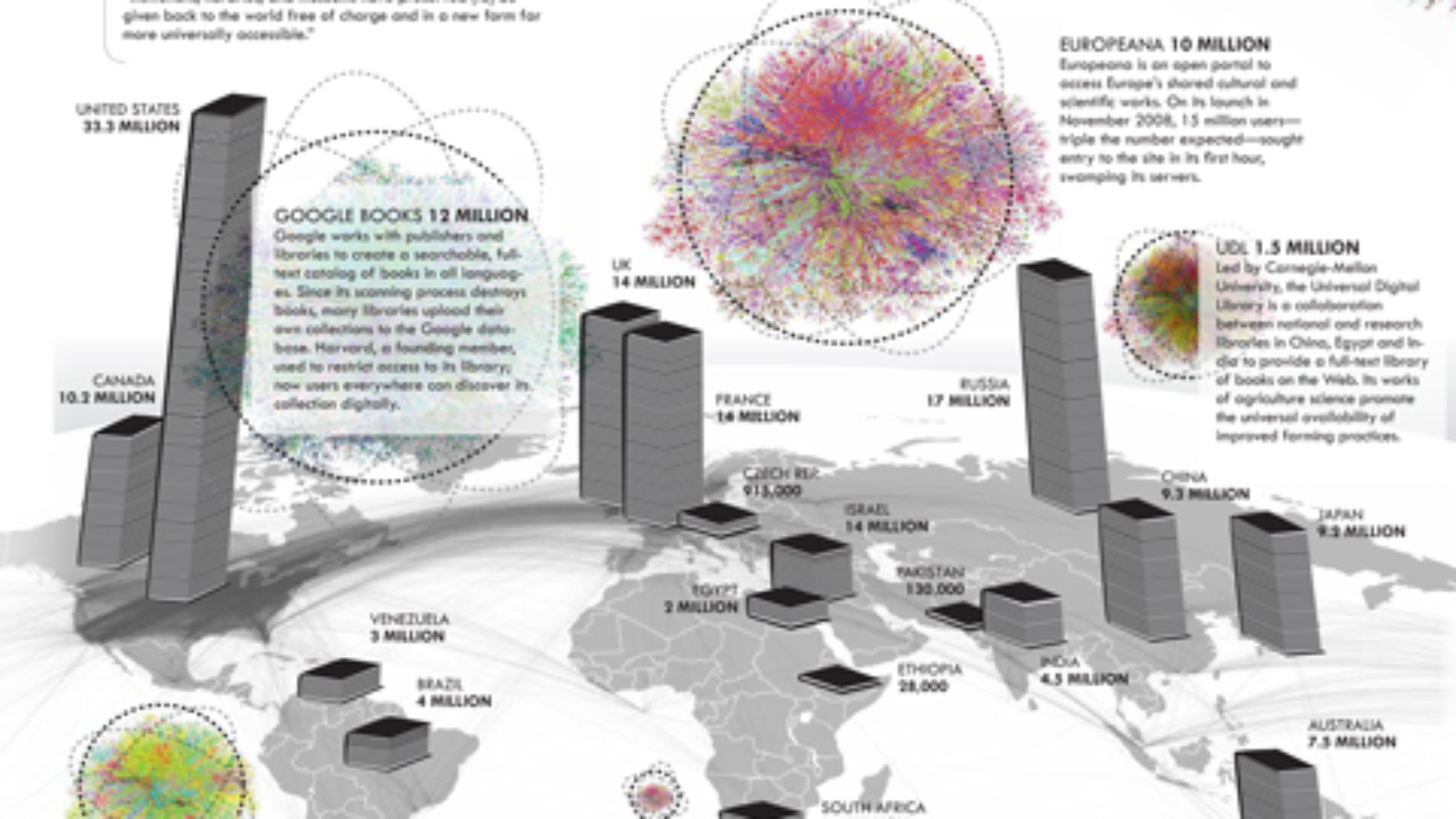Four times a year, the World Policy Journal publishes a magazine of intelligent and thought-provoking writing, investigating pressing issues in global affairs through the Institute’s broad, far-reaching perspective. Recent editions have covered crime and corruption, water and global health. In the next few months, the World Policy blog will issue a selection of articles from this quarter’s fall issue, "The Creative Canon."
by Nestor K. Bailly
The world’s libraries hold at least 1.5 billion items, according to the listings of World-Cat, the massive catalog of the Ohio-based Online Computer Library Center. Books are no longer just printed and bound words gathering dust on shelves. The holdings of national libraries may still be greater than their digital counterparts, but scanned books, available on the Internet, are revolutionizing the role of the library in civil society. In August 2010, Google estimated there are some 130 million books in the world that it hopes to digitize, and they are not the only ones with such a mission.
Libraries today are digital pioneers, scanning and uploading vast amounts of data from their collections. University and library collectives across nations, like the Universal Digital Library and Europeana, scan entire collections or choose certain categories of writing to digitize. The Austrian National Library and the World Digital Library began digitization to ensure historic works were safeguarded beyond their fragile pages, taking their cue from the destruction of the Library of Alexandria a millennium ago—when fire consumed innumerable ancient texts.
Digitization protects and shares humanity’s collective knowledge. Though a truly global digital library, encompassing all published work in every medium, may be decades in the future, it’s already well underway.
The full map can be found here.
Worldwide Internet Traffic Visuals by Chris Harrison. Infographic by Nick Ditmore.
